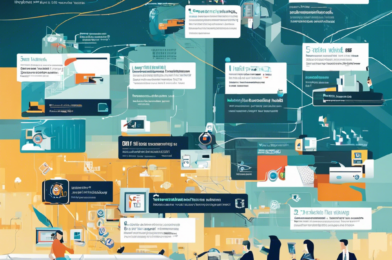The Fascinating World of Cats: Unveiling Their Secrets
The Fascinating World of Cats: Unveiling Their Secrets
Cats have captivated humans for centuries with their enigmatic nature, graceful movements, and independent personalities. These furry companions have become an integral part of many households, bringing joy, comfort, and a touch of mystery to our lives. In this article, we will delve into the fascinating world of cats, exploring their behaviors, uncovering their rich history, and understanding the unique bond they share with humans.
Understanding Cat Behavior
Cats are known for their independent nature, but beneath that facade lies a complex and fascinating set of behaviors. Understanding these behaviors can help us better care for our feline friends and strengthen the bond we share with them.
The Language of Meows and Purrs
One of the most distinctive aspects of cat communication is their meows and purrs. While meows are often used to communicate with humans, purring is a more complex form of communication. Cats purr not only when they are content but also when they are in pain or seeking comfort. It is believed that purring has a therapeutic effect on cats, helping them heal and relax.
Body Language and Postures
Cats are masters of body language, using subtle cues to express their emotions and intentions. Understanding their body language can help us interpret their needs and desires. For example, a cat with a puffed-up tail and flattened ears is likely feeling threatened or aggressive, while a relaxed cat with a gently curved tail is content and at ease.
The Art of Hunting
Cats are natural-born hunters, and their hunting instincts are deeply ingrained in their behavior. Even domestic cats retain these instincts, often displaying playful hunting behaviors. Understanding their hunting instincts can help us provide them with appropriate outlets for their energy and prevent unwanted behaviors like scratching furniture.
A Brief History of Cats
The history of cats is a fascinating journey that spans thousands of years. From their wild ancestors to their current status as beloved pets, cats have left an indelible mark on human civilization.
The Wild Origins
The ancestors of modern-day cats were wild felines, such as the African wildcat, that roamed the ancient landscapes. These wild cats were skilled hunters, adapting to various environments and developing unique survival strategies. Over time, humans began to appreciate their hunting skills and gradually domesticated them.
Cats in Ancient Civilizations
Cats played significant roles in ancient civilizations, often revered and worshipped for their mysterious nature and association with the divine. In ancient Egypt, cats were considered sacred and were even mummified alongside their human companions. They were believed to bring good luck and protection, and their images adorned many artifacts and monuments.
The Spread of Cats
As humans migrated and traded, cats accompanied them on their journeys, spreading across different continents. This global spread led to the development of various cat breeds, each with its unique characteristics and adaptations to different environments. Today, we have a diverse range of cat breeds, from the graceful Siamese to the robust Maine Coon.
The Impact of Cats on Human Lives
Cats have had a profound impact on human lives, offering companionship, emotional support, and even therapeutic benefits. Their presence has enriched our lives in countless ways, and their unique personalities have left an indelible mark on our culture and society.
Companionship and Emotional Support
Cats are known for their affectionate nature and ability to form deep bonds with their human companions. They provide unwavering loyalty, comfort, and a sense of security. Studies have shown that interacting with cats can reduce stress, lower blood pressure, and improve overall well-being. Their presence can be especially beneficial for individuals living alone or facing mental health challenges.
Therapeutic Benefits
The therapeutic benefits of cats extend beyond emotional support. Cats have been used in animal-assisted therapy programs, helping individuals with physical and mental disabilities. Their calm and non-judgmental presence can provide a sense of comfort and reduce anxiety. Additionally, the simple act of petting a cat has been shown to release oxytocin, a hormone associated with bonding and relaxation.
Cultural Influence
Cats have left their mark on various aspects of human culture, from literature and art to popular media. They have inspired countless works of art, from ancient Egyptian sculptures to modern-day paintings and sculptures. In literature, cats have played central roles in classic stories like The Cat in the Hat and Alice’s Adventures in Wonderland. Their enigmatic nature and unique personalities continue to captivate artists and writers, ensuring their place in the annals of human creativity.
Conclusion: Embracing the Feline Spirit
Cats are more than just pets; they are companions, friends, and a source of inspiration. Their independent nature, graceful movements, and mysterious behaviors have captivated humans for centuries. By understanding their behaviors, exploring their rich history, and appreciating the impact they have on our lives, we can deepen our connection with these fascinating creatures.
Whether you are a cat owner or simply an admirer of these furry friends, embracing the feline spirit can bring joy, comfort, and a deeper understanding of the natural world. So, the next time you encounter a cat, take a moment to appreciate their unique charm and the special place they hold in our hearts and lives.
Key Takeaways
- Cats have a rich history, from their wild origins to their revered status in ancient civilizations.
- Understanding cat behavior, including their meows, purrs, and body language, can strengthen the bond between cats and humans.
- Cats provide companionship, emotional support, and therapeutic benefits, enriching the lives of their human companions.
- Their impact on human culture is profound, inspiring art, literature, and a deep appreciation for their enigmatic nature.





